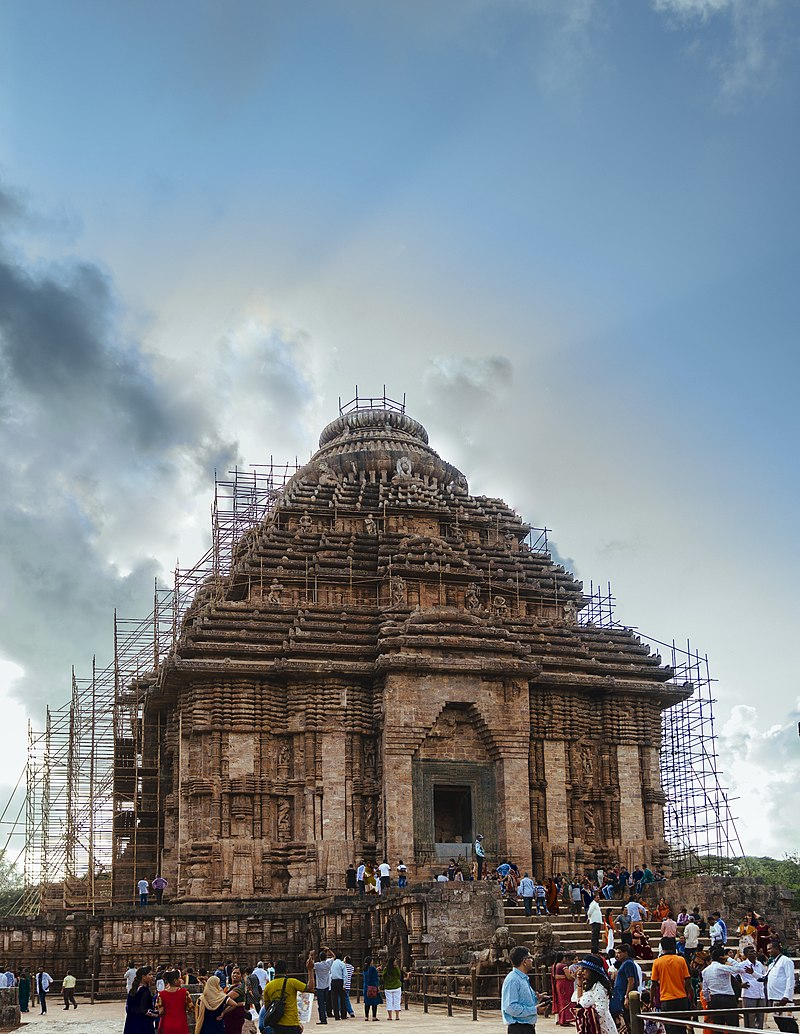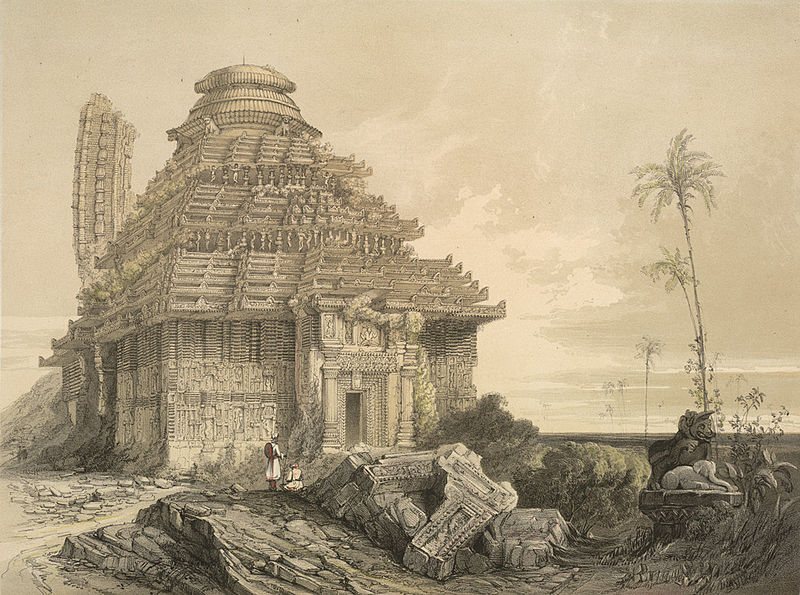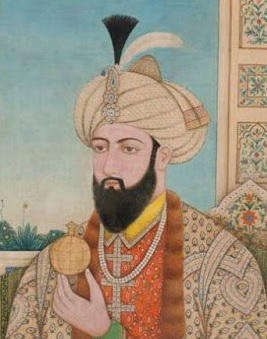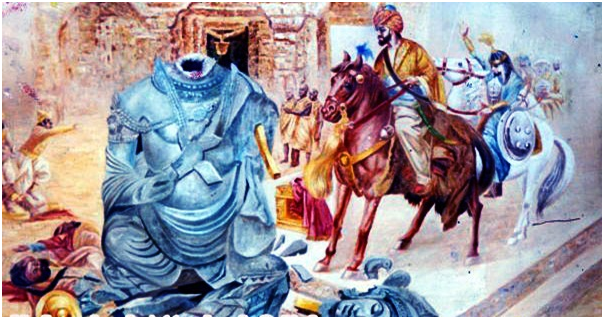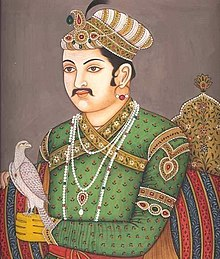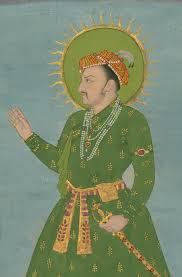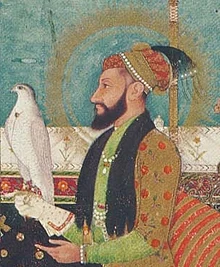Persecution of the Kingdom of Surangi
Mughal Invasions in Orissa
Orissa had its first brush with Muslim invaders during the reign of Eastern Gangas. There were two Muslim invasions which were repelled. These invasions were planned in Gauda or modern Bengal which had a Muslim Governor. Therefore, King Narasimhadev I in Orissa, the builder of the temple at Konark, invaded Bengal in 1243 and defeated Governor Tughral Tughan Khan. He removed Lakhnaur in Birbhum district in 1244.
There were two more failed Muslim invasions into Orissa between 1247 and 1255. The Muslim invaders were greedy for the richness of Orissa starting with the elephants that Orissa groomed. They attacked continuously and returned with large numbers of elephants. Tughral Khan, the Governor of Bengal, who had attacked in 1280, returned with a large number of elephants. Firoz Shah invaded Orissa in 1360 to gather more elephants from Orissa.
The Hindu Rule: Its End
The period of strong and powerful rulers was followed by the usual internecine warfare. King Mukundadev of the Bhoi dynasty, was the last independent Hindu king of Orissa. It was from his hands that the Turko-Afghans took over power in 1568.
(Ref: https://www.patheos.com/blogs/hindu2/2015/04/muslim-invaders-in-orissa/)
Military Campaigns of Kalapahar
The Kings of Orissa and the Sultanate of Bengal waged two wars – the first was won by a Gajapati Dynasty King, the second by the Bengal Sultanate. The general of the Bengal Sultanate army was a ruthless man named Kalapahar (Black Mountain), who after the second war, ransacked major towns and religious places of the kingdom in 1568, which form the contemporaneous Indian state of Odisha. He was the general of Bengal Sultan Sulaiman Khan Karrani. According to Afsanah-i-Shahan of Shaikh Kabir Batini (a prominent book on the history of Mughal rule in India), he was a Batini Afghan.
According to Shamsuddin Ahmed in the National Encyclopedia of Bangladesh, Sultan Sulaiman sent his army into Odisha to expand his Sultanate under the command of his son “Bayazid and General Kalapahar”. They defeated and killed the king Mukundadev. General Kalapahar led a contingent deep into the kingdom to subjugate it.
Konark Sun Temple – Reconstructed After the Mughal Invasion
Reconstruction of Konark Sun Temple
Kalapahar repeated attacked and damaged the Konark Sun Temple. According to the history of Odisha, Kalapahad invaded Odisha in 1568. He destroyed the Konark Sun Temple, as well as many other Hindu temples in Odisha. The Madala Panji (chronicle) of Puri Jagannath temple describes how Kalapahad attacked Odisha in 1568.
A lithography plate from James Fergusson’s “Ancient Architecture in Hindoostan” (1847) showing part of the main tower of the Konark temple still standing.
Invasions of Jagannath Puri Temple
Throughout the ages the temple of Lord Jagannath, Puri had been invaded and plundered for eighteen times in the annals of history. The temple was a lucrative place of wealth for invaders to plunder. To Mughal invaders, the temple was a good place to display Jihad (Religious War). To loot its property and “profane idols” were motives behind every invasion. Owing to a series of inroads on the way to the temple of Lord Jagannath, the three deities were rushed to safety at various points to various regions of Orissa.
(Ref: https://magazines.odisha.gov.in/Orissareview/2011/july/engpdf/82-89.pdf)
Odisha came under the Muslim rule as late as 1568 – more than three centuries after Bengal and many years after the Andhra region to the west were subjected to the Muslim rule. By 1751, the following raids by the Nagpur based Bhosales, the reign of the Bengal Nawabs over Odisha came to an end. Warriors such as Narasimhavarman and Kapilendradeva of the Ganga and Gajapati dynasties not only prevented Odisha from getting annexed but greatly enhanced its culture and temple life after multiple invasions and destruction. But the attempts of invasion on Jagannath Puri were plenty and too much was destroyed.
- In 1340, Illias Shah, the Sultan of Bengal attacked the Jagannath temple. Illias Shah was the person who established a Sultanate in Bengal – which would continue in various forms and under different rulers, allied or opposed to Delhi, till the Battle of Plassey in 1757. The invasion brought great destruction, but the deities were hidden and hence saved.
- Twenty years later, Feroze Shah Tughlaq invaded. Records reveal that he threw the deities into the sea. Feroze Shah Tughlaq also brought down a few temples at Barabati in Orissa.
Feroze Shah Tughlaq
- This happened during the reign of Prataprudradev (1497 to 1540). The northern borders of his kingdom in Puri were attacked by Ismail Ghazi, a commander of the Bengal Sultan. Seeing the trail of destruction that preceded his arrival at Puri, the priests of the Jagannath temple took the deities away and hid them at the Chadhaiguha Island in Chilka Lake. Prataprudradev finally amassed a large army and chased Ismail Ghazi back to Bengal, but the damage had been done by then.
- The fifth invasion and by far the most destructive was by General Kalapahar in 1568. It also signaled the end of Hindu rule in Odisha. His invasion of Odisha in 1568 wiped out the last Hindu ruler and the deities were once again somehow taken to the Chilka Lake. But Kalapahar found out their location and proceeded to break the idols and set them on fire. A pilgrim managed to retrieve the Brahmapadarth from the burnt idols and kept it hidden in his mridang (musical instrument).
- ‘Brahmapadarthas’ are core materials in the wooden deities of Sri Jagannath temple. These core materials are transferred from the old deities to the new in a metaphor of immortality of the soul and its reincarnations. Hindu rule in Odisha ended as a result of this invasion – with the defeat and death of the ruler Mukundadeva. The Brahmapadarth was brought to Puri and new idols installed by a king named Ramchandradeva in 1575.
A depiction of General Kalapahar during the invasion of Orissa
- The next major invasion followed merely seventeen years later by the Mughal King Suleiman, the namesake of his predecessor Suleiman Kararani, who attacked the temple in 1592 AD. People at Puri were killed in scores and the temple was attacked, with the result that many deities were broken. At this point, King Ramchandradev I was recognised as the ruler of Khurda and the management of the Jagannath temple was reinstated to him since the Bengal Sultanate had taken over Orissa in 1568. However, the province itself now came under Mughal influence, after having spent a generation under the influence of Bengal sultans.
- The reign of Purushottam Deva saw as many as six separate invasions of the temple at Puri. In 1607, a commander of the Bengal Nawab named Mirza Khurum launched an attack, but the deities were saved by moving them to Kapileswar, which is about fifty kilometers away. It would be nearly a year before the deities were reinstated at the temple in Puri.
- A couple of years later, Qasim Khan, the Mughal subhedar (Viceroy) of Odisha attacked the temple. The deities were hidden and taken to Khurda (an administrative province in Puri), where they were installed in the Gopala temple. Qasim Khan, eager to satisfy the Mughal ruler Jahangir, plundered and looted the temple town. The deities were once again brought to Puri once the dust of this invasion too had settled.
- The ninth invasion was mounted by Kesodarmaru. During the rath yatra festival of 1610, when the deities were at the Gundicha temple (close to Jagannath temple), this loyal servant of Qasim Khan attacked and occupied the precincts of the Jagannath temple at Puri. He was also responsible for setting the Jagannath Puri chariots on fire during this invasion. The temple he held for eight months, during which time Purushottam Dev tried to oppose him. Finally, a tribute of three lakh rupees to Jahangir paved the way for the deities to be reinstalled at Jagannath Puri.
- After Qasim Khan, Kalyan Mal, the son of Todar Mal (the famous courtier of Akbar) became Viceroy of Odisha. He mounted the tenth invasion, seeing how the ninth had resulted in the coffers increasing by three lakh. The deities were shifted beforehand to Mahisamari in the Chilka Lake. This was in 1611. Soon after, Kalyan Mal attacked a second time and looted the temple.
Akbar, under whose rule Puri Jagannath was invaded several times.
- In 1612, Jahangir appointed Mukarram Khan as Viceroy of Odisha, and he kept up the temple attack mercilessly. Mukarram Khan ruthlessly attacked the city and broke many deities, but the important ones of Jagannath temple had been moved to Gopapada in anticipation of his invasion and further to the Bankanidhi temple. Mukarram Khan died soon after in a drowning incident.
Jahangir, Mughal King who appointed Mukarram Khan to invade the Puri Temple.
- This was an attack on the whole of Orissa itself by Shah Jahan as he proceeded through the province. The deities were shifted out of the temple as a preventive measure.
- Amir Mutquah Khan, taking advantage of the political instability following the death of Narasimha Deva, attacked and plundered the Jagannath Puri temple.
- In 1647, the Mughal Viceroy Mudbak Khan attacked the temple and caused wanton loot and killings.
- Aurangzeb, in 1692, issued orders for the temple to be brought down. Earlier in his reign, many temples had been broken – most famously the ones at Kashi, Mathura and Somnath. Jagannath Puri was another of his stated aims. The Tabzirat ul Nazrin (a chronicle of Mughal rule in India) and Madala Panji (a chronicle of events at Jagannath puri) both state that Aurangzeb issued orders for destroying the temples and the idols. Ekram Khan, the Mughal commander in Odisha actually walked into the temple and damaged it, which corroborated in multiple chronicles. The Brahmapadarth was saved and taken to the Bimala temple and was well protected by Divyasingha I, the ruler of Khurda. The wooden deities in which the Brahmapadarth was kept were destroyed by Ekram Khan, although one account states they were shifted to Banapur near the Chilka Lake.
Aurangzeb, another Mughal ruler to issue orders for the destruction of Puri temple through his general, Ekram Khan.
Mohammed Taqi Khan became Naib Nazim or Deputy Governor of Odisha around 1717 AD and mounted an attack on the temple in Puri in 1733, causing widespread destruction. The idols, like on previous occasions were shifted away as soon as the priests got wind of the impending attack and moved to various places before finally being installed in a temple on a hill at Kodala, where they continued to be worshipped till 1736. That year Mohammed Taqi Khan died and the idols were returned to Jagannath temple at Puri. One might think that Puri enjoyed some semblance of peace between 1699 and 1733. This was not so. It was just an uneasy calm brought about due to the fall of the Mughal Empire.
The most significant feature in the history of invasion on the great temple of Lord Jagannath at Puri that in no case the ‘Brahmapadarth’ of the deities were destroyed which continued till today. The servitors played an important role in safeguarding the triad at the time of danger. The Kings have taken care of the temple from destruction by surrendering before the invaders. In Ayodhya, Kashi and Mathura the mosques have been built in place of the temples due to Muslim invasion. At Puri the temple of Lord Jagannath remained standstill at the time of the invasion.

